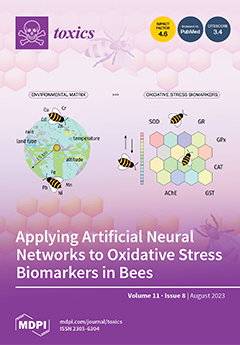Eutrophication in water reservoirs releases algal organic matter (AOM), which is an important precursor of disinfection by-products (DBPs) formed during water treatment.
Chlorella sorokiniana is a microalgae which flourishes under conditions of high light intensity and temperature, thus its prevalence in algal blooms
[...] Read more.
Eutrophication in water reservoirs releases algal organic matter (AOM), which is an important precursor of disinfection by-products (DBPs) formed during water treatment.
Chlorella sorokiniana is a microalgae which flourishes under conditions of high light intensity and temperature, thus its prevalence in algal blooms is expected to increase with climate change. However,
Chlorella sorokiniana AOM has not been previously investigated as a DBP precursor. In this context, this study evaluated the effect of AOM concentration, humic acid (HA), and pH on DBP formation from chlor(
am)ination of AOM
Chlorella sorokiniana. DBP yields determined by linear regression for trichloromethane (TCM) and chloral hydrate (CH) were 57.9 and 46.0 µg·mg DOC
−1 in chlorination, while the TCM, CH, dichloroacetonitrile (DCAN), 1,1,1-trichloropropanone (1,1,1-TCP), and chloropicrin (CPN) concentrations were 33.6, 29.8, 16.7, 2.1, and 1.2 µg·mg DOC
−1 in chloramination. Chloramination reduced the formation of TCM and CH but increased CPN, DCAN, and 1,1,1-TCP yields. AOM
Chlorella sorokiniana showed a higher DBP formation than 9 of 11 algae species previously investigated in the literature. At basic pH, the concentration of TCM increased while the concentration of other DBP classes decreased. Bromide was effectively incorporated into the AOM structure and high values of bromine incorporation factor were found for THM (1.81–1.89) and HAN (1.32) at 1.5 mg Br·L
−1. Empirical models predicted successfully the formation of THM and HAN (
R2 > 0.86). The bromide concentration had more impact in the model on the DBP formation than AOM and HA. These results provide the first insights into the DBP formation from AOM chlor(
am)ination of
Chlorella sorokiniana.
Full article






